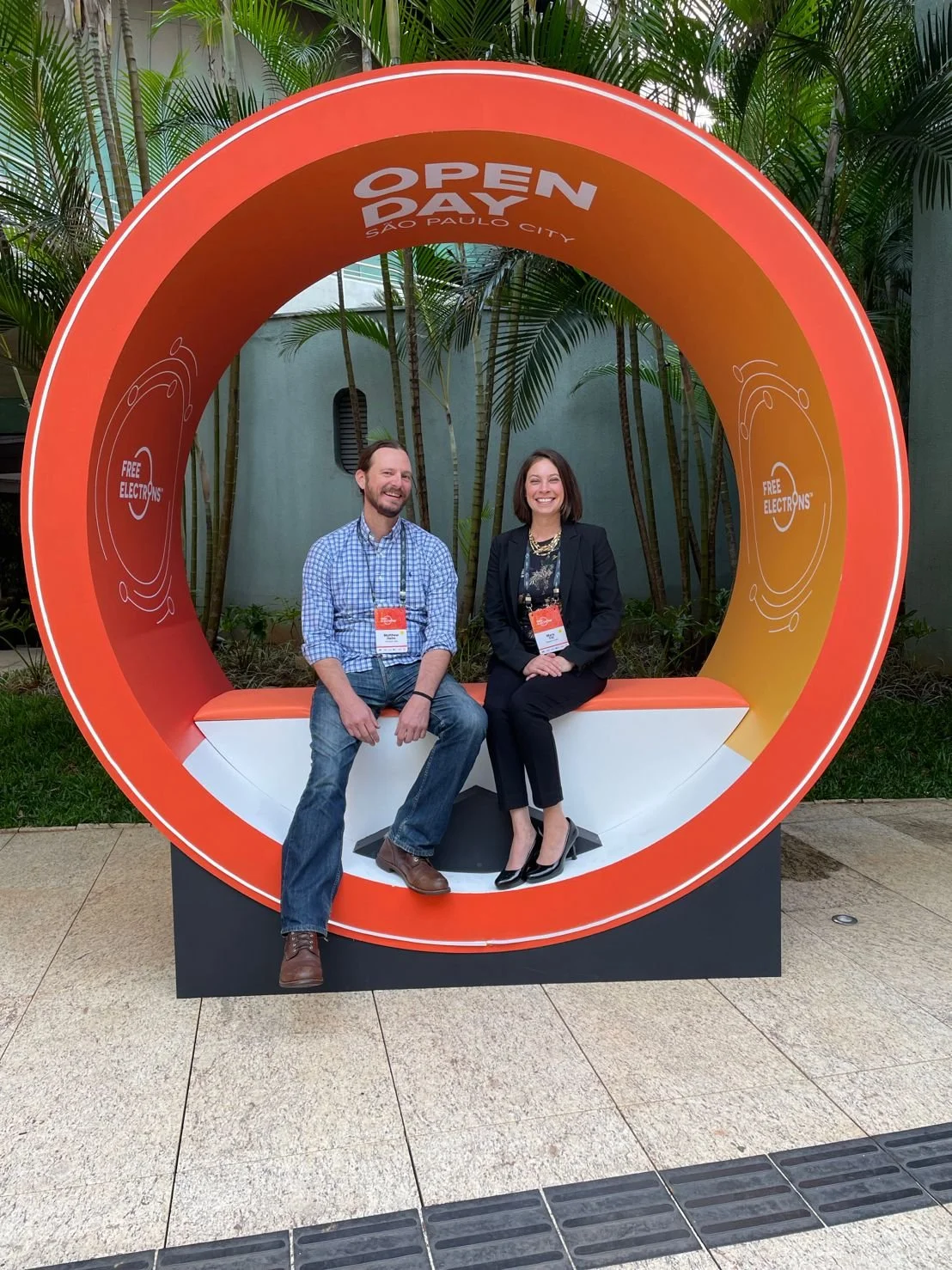Our 4 Biggest Takeaways From the Free Electrons Grand Finale in São Paulo, Brazil
In October 2022, the Sawatch Labs team took a trip to beautiful São Paulo, Brazil, to attend the Free Electrons Grand Finale. There, we met with industry professionals from all over the world to discuss more innovative, more effective, and more sustainable energy solutions.
What is Free Electrons?
Free Electrons is an energy innovation program that connects selected startups with major energy utility partners (AEP from the US, EDP of Portugal, ESB from Ireland, E.On from Germany, and CLP from Hong Kong) to work together on bringing promising solutions to the energy utilities market. We’re proud to report that Sawatch Labs was one of fifteen start-ups selected!
While we didn’t win, we did learn a lot from energy utility companies as well as other startups in regard to what it’ll take to create a world in which smart, clean, and accessible energy is the norm.
Here are some of our biggest takeaways.
The Energy Utilities Industry is Facing a “Tri-lemma”
Building a sustainable electric grid requires utilities to balance three things:
Energy affordability
Resiliency
Emissions reduction
It’s a challenge that utilities around the world are facing. However, the good news is that it prompts them to search for increasingly innovative solutions to ensure both reliability and affordability as they move toward meeting their long-term sustainability targets.
Utilities Are More Creative Than You Might Think
Many utility companies, like the ones we connected with at the Free Electrons Grand Finale, are dedicated to utilizing all of the tools and resources they have to create new, effective ways to cut through red tape, engage small businesses, invest in green technologies, and deliver quality clean energy solutions.
Hydrogen Has the Potential to Change the Game
We’re all on the precipice of something truly extraordinary when it comes to the usage of hydrogen within the energy industry. According to the IEA, hydrogen is one of the “leading options for storing renewable energy, and hydrogen…can be used in gas turbines to increase power system flexibility.” Hydrogen could help decarbonize several big players in the economy, such as steel production, oil refinement, and even long-haul trucking companies. However, one of the biggest obstacles that stands in the way of having clean hydrogen energy be mainstream is one word: cost. This kind of energy transition would require a significant investment from governments on an international scale to properly decrease emissions.
Here are a few great resources we recommend reviewing if you’re interested in learning more about hydrogen and how it could change the game for the energy industry:
Coordination is Critical to Ensuring Charging Needs Are Met with EV Deployment
Utilizing electric vehicles (EVs) is a critical contributing factor to lowering overall emissions and combatting climate change but deciding the right vehicles in your fleet to convert to EVs requires precise data on how those vehicles will be used to coordinate where the EV chargers will need to be installed.
The following are a few key methods to gather and fully understand your fleet’s data.
EV telematics: Telematic data on vehicles in your fleet gives fleet managers insights into how their vehicles are being used, where they are parked, and how many miles they are driving. You can use this telematic data to make decisions on where to install chargers and which specific vehicles can be converted to EVs.
Fleet optimization: This involves making alterations to fleet size, routes, and vehicle types to reduce fuel consumption and, ultimately, greenhouse gas emissions. When you’re making decisions about electrifying your fleet to get the highest ROI, it is helpful to utilize telematic data to optimize your fleet and install charging infrastructure.
In closing, fleet electrification requires quite a bit of data-driven planning and coordination between EV vehicles and the supporting charging infrastructure. Sawatch Labs EV telematics and analytics software is a valuable tool for fleet managers looking to electrify their fleet.


